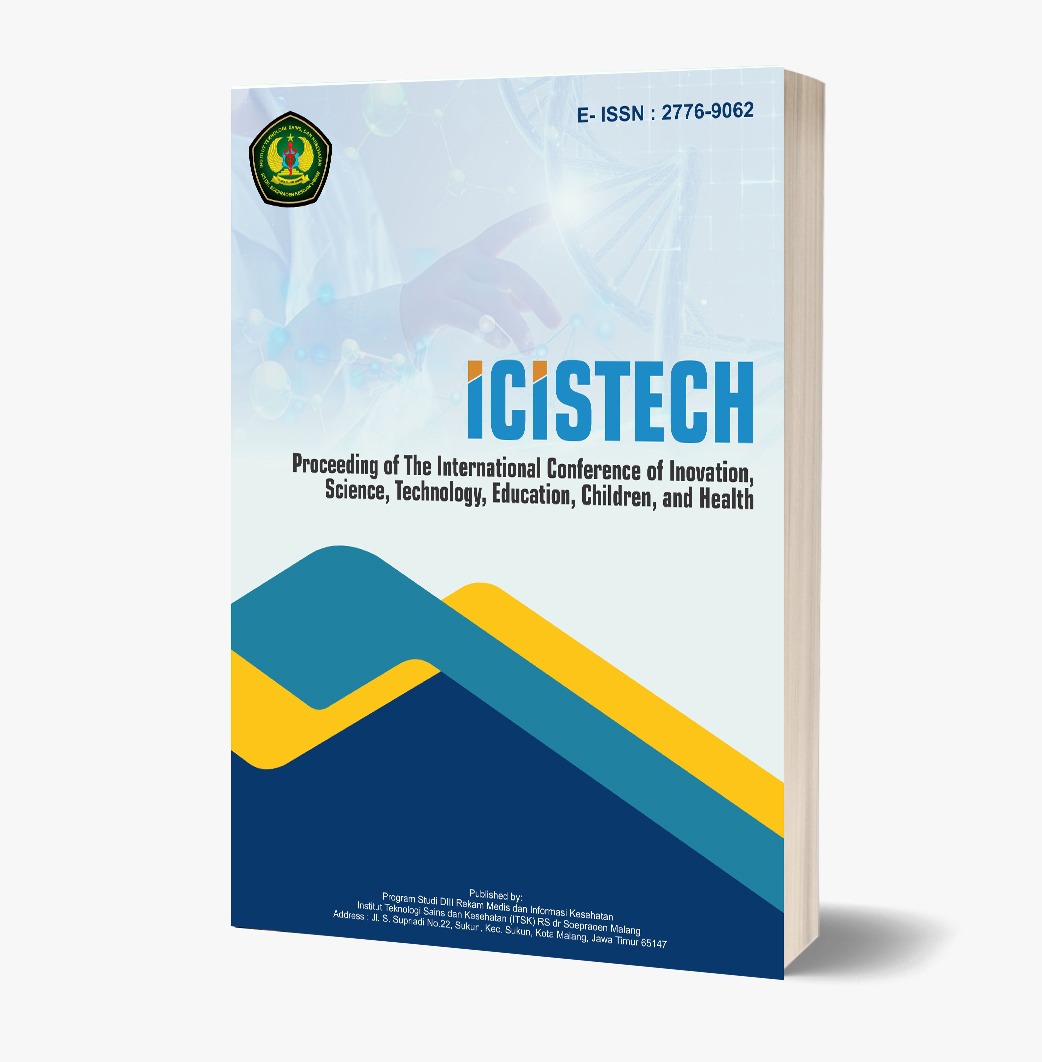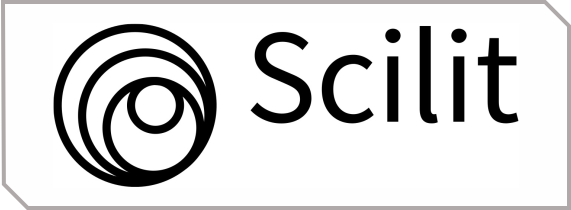Factors Affecting the Frequency of K1 Visits for Pregnant Women in Maternal Health Programs
DOI:
https://doi.org/10.62951/icistech.v5i1.264Keywords:
Antenatal Care, Maternal Health, PregnancyAbstract
This study aims to identify the factors that influence the first antenatal visit (K1) among pregnant women. The study employed a descriptive design with a cross-sectional approach, utilizing a total sampling technique. A total of 49 respondents, all of whom made the K1 visit, were included in the study. The variables examined in this research included maternal age, parity, and gestational age at the time of the K1 visit. Secondary data obtained from medical records were used for analysis. The results revealed that the majority of pregnant women who made the K1 visit were in the non-risk age group (20–35 years), accounting for 84% of the respondents. Regarding parity, most participants were multiparous, making up 53% of the total sample. In terms of gestational age, 43% of respondents made their K1 visit during the first trimester of pregnancy (0–12 weeks). The study found that the first antenatal visit was predominantly conducted by pregnant women in the non-risk age group (20–35 years) and the multiparous group. Additionally, the K1 visits were most frequently made when the gestational age was in the first trimester, reflecting early engagement with antenatal care. These findings highlight the importance of maternal age, parity, and gestational age in influencing the timing of the first antenatal visit, which plays a critical role in ensuring early and adequate prenatal care for pregnant women. These insights can be used to improve strategies for encouraging timely K1 visits, particularly for pregnant women who may be at risk of delayed prenatal care.
References
Addiarto, W., & Hasanah, Y. R. (2023). Study investigation of the risk factors of toddlers with low nutritional status in the North Coast of Java, Indonesia. Jurnal Kesehatan dr. Soebandi, 11(2), 107-112. https://doi.org/10.36858/jkds.v11i2.508
Adila, W. P., Yanti, R. S., & Sriyanti, R. (2023). The relationship of chronic energy deficiency (CED), exclusive breastfeeding, and economic status with stunting in Nagari Aua Kuning, West Pasaman. Science of Midwifery, 10(6), 2721-9453. Retrieved from www.midwifery.iocspublisher.org
Akbar, R. R., Kartika, W., & Khairunnisa, M. (2023). The effect of stunting on child growth and development. Science Journal, 2(4), 153-160. https://doi.org/10.56260/sciena.v2i4.118
Aldisurya, A. A., Akhriani, M., Wati, D. A., & Dewi, A. P. (2023). Relationship between pre-pregnancy body mass index (BMI), number of pregnancies, and number of nutrition education participation with circumference upper arm (LILA) of pregnant women. Indonesian Journal of Health Research and Development, 1(2), 32-38. https://doi.org/10.58723/ijhrd.v1i2.99
Apriliyanti, R., & Kustriyanti, D. (2023). Children growth and development of 18 months-aged babies: Nutritional status overview for early stunting screening. Jurnal Smart Keperawatan, 10(1), 37. https://doi.org/10.34310/jskp.v10i1.709
Aryani, A., Herawati, V. D., Mufidah, N., & Eriyanti, E. (2024). The effect of health education on nutrition on increasing mothers' knowledge in preventing stunting in children. International Journal of Education in Health and Science, 2(1). https://doi.org/10.36728/iceete.v2i1.167
Astuti, F. D., Azka, A., & Rokhmayanti, R. (2022). Maternal age correlates with stunting in children: Systematic review. Jurnal Maternitas dan Kesehatan, 7(4), 479-448. https://doi.org/10.26911/thejmch.2022.07.04.11
Fibriana, A. I., Budiono, I., Pribadi, F. S., & Kasmini, O. W. (2025). Factors influencing cognitive development in early childhood: A systematic literature review. Journal of Early Childhood Education Studies, 9-22.
Ismail, F., Fasrini, U. U., & Harmen, A. P. (2024). Nutritional status and cognitive development in children aged 2-5: A narrative review. Journal of Child Development, 16(1).
Kurnia, Y. (2023). Correlation between nutritional status of mothers during pregnancy and stunting incidence at the age of 24-59 months at Godean Health Center 1. Jurnal Kebidanan, 12(1), 61-68. https://doi.org/10.26714/jk.12.1.2023.61-68
Lestari, E., Siregar, A., Hidayat, A. K., & Yusuf, A. A. (2024). Stunting and its association with education and cognitive outcomes in adulthood: A longitudinal study in Indonesia. PLoS One, 19(5), 1-18. https://doi.org/10.1371/journal.pone.0295380
Maskur, S. U., Budiman, B., & Lestari, A. (2021). The relationship between knowledge and dietary habit with incidence chronic energy deficiency in the pregnant women in the working area Talise City of Palu. International Journal of Health Economics and Social Sciences, 3(1), 19-27. https://doi.org/10.56338/ijhess.v3i1.1423
Morales, F., Montserrat-de la Paz, S., Leon, M. J., & Rivero-Pino, F. (2024). Effects of malnutrition on the immune system and infection and the role of nutritional strategies regarding improvements in children's health status: A literature review. Nutrients, 16(1), 1-16. https://doi.org/10.3390/nu16010001
Mulianingsih, M., Nurmayani, W., Pratiwi, A., Rifky, N., & Safitri, H. (2021). Nutritional status and weight of pregnant women to birth weight (BBL) for early detection of stunting. Scientific Journal of Health, 10(1), 138-150. https://doi.org/10.30994/sjik.v10i1.523
Ningrum, E. W., & Cahyaningrum, E. D. (2020). Estimation model on newborn anthropometry based on mid-upper arm circumference (MUAC). Jurnal Kebidanan dan Keperawatan Aisyiyah, 16(1), 120-125. https://doi.org/10.31101/jkk.1486
Prasetyo, Y. B., Wardojo, S. S. I., & Laksono, A. D. (2024). Factors influencing children's dietary variety in Eastern Indonesia: A comprehensive national analysis. Jurnal Keperawatan Padjadjaran, 12(3), 308-315. https://doi.org/10.24198/jkp.v12i3.2488
Romey, R., & Mangunsong, D. (2025). Stunting and its implications on cognitive ability and language development. Journal of Public Health Science, 10, 134-147. https://doi.org/10.26911/jepublichealth.2025.10.02.01
Roseboom, T. J. (2019). Epidemiological evidence for the developmental origins of health and disease: Effects of prenatal undernutrition in humans. Journal of Endocrinology, 242(1), T135-T144. https://doi.org/10.1530/JOE-18-0683
Roswita, K. W., & Nurbaniwati, N. (2022). The correlation between anemia and chronic energy deficiency in pregnant women with the incidence of low birth weight at the Ciwaringin Cirebon Health Center in 2020-2022. Obstetrics and Gynecology Journal, 7(3), 382-390. https://doi.org/10.24198/obgynia.v7i3.751
Safitri, N. I., et al. (2023). Risk factors of stunting in children aged 0-23 months in Katumbangan Health Center, Indonesia. Pharmacognosy Journal, 15(5), 851-855. https://doi.org/10.5530/pj.2023.15.163
Soliman, A., et al. (2021). Early and long-term consequences of nutritional stunting: From childhood to adulthood. Acta Biomedica, 92(1), 1-12. https://doi.org/10.23750/abm.v92i1.11346
Sopiah, M. (2022). Early childhood development (physical, intellectual, emotional, social, moral, and religious tasks) implications for education. Indonesian Journal of Early Childhood, 4(2), 361. https://doi.org/10.35473/ijec.v4i2.1674
Sutami, I. (2023). Nutrition education on family-based food and knowledge on feeding practices of mothers of children. Agricultural Extension and Communication Study Program, Faculty of Agriculture, Sebelas Maret University, 36, 1548-1556.
Tyarini, I. A., Menga, M. K., Setiawati, A., & Daiyah, I. (2025). The effect of nutritional status of pregnant women on the incidence of stunting in early childhood: Determinants of growth and development. Journal of Early Childhood Education, 3(1), 24-31. https://doi.org/10.61099/junedik.v3i1.71
Widyayanti, A., Dewie, A., & Silfia, N. N. (2025). Determinants of chronic energy deficiency (CED) in pregnant women in the Lere Health Center working area, Palu City in 2021-2023. Journal of Midwifery and Public Health, 17(1), 1-10. https://doi.org/10.36456/1dzp9q54
Downloads
Published
How to Cite
Issue
Section
License
Copyright (c) 2025 Proceeding of The International Conference of Inovation, Science, Technology, Education, Children, and Health

This work is licensed under a Creative Commons Attribution-ShareAlike 4.0 International License.













